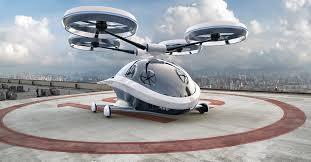eVTOL Aircraft Market Outlook
The cosmos, once the exclusive domain of behemoth spacecraft, is undergoing a profound transformation. A quiet revolution is underway, driven by the burgeoning potential of small satellites. These compact marvels, far from being mere novelties, are reshaping our understanding and utilization of space, and their market is poised for explosive growth.
Recent market analysis indicates a staggering trajectory for the small satellite industry. Valued at USD 3.5 billion in 2022, the sector is projected to surge to USD 12.25 billion by 2030, exhibiting a remarkable compound annual growth rate (CAGR) of 19.60% from 2024 onwards. This exponential expansion highlights the undeniable impact these diminutive spacecrafts are having on various sectors.
What fuels this meteoric rise? Several key drivers are propelling the small satellite market forward.
Firstly, the increasing demand for Low Earth Orbit (LEO) constellations is a significant catalyst. LEO's proximity to Earth translates to reduced latency and enhanced data transfer speeds, making it ideal for applications like high-speed internet, real-time monitoring, and remote sensing. Small satellites, with their lower development and launch costs, are perfectly suited for deploying these constellations. Companies are leveraging this advantage to build expansive networks for global eVTOL Aircraft market connectivity, revolutionizing communication and data accessibility.
Secondly, the integration of the Internet of Things (IoT) into the manufacturing sector is creating a surge in demand for small satellite solutions. IoT devices, deployed across diverse industries, require robust and reliable connectivity for data transmission and analysis. Small satellites, capable of providing seamless global coverage, are becoming integral components of IoT ecosystems, enabling real-time monitoring of assets, supply chains, and environmental conditions.
Furthermore, the advancements in miniaturization and cost-effective manufacturing are making small satellites increasingly accessible. Technological breakthroughs in components like miniaturized sensors, high-performance processors, and efficient propulsion systems have significantly reduced the size and weight of these spacecraft. This enables more frequent and affordable launches, opening up the space sector to a wider range of players, including startups and research institutions.
The applications of small satellites are diverse and transformative. Earth observation, for example, is being revolutionized by constellations of small satellites equipped with advanced imaging sensors. These satellites provide high-resolution imagery for environmental monitoring, disaster management, and agricultural analysis. Real-time data from these satellites enables faster responses to natural disasters, improved resource management, and enhanced agricultural productivity.
Communication is another sector profoundly impacted by small satellites. The development of LEO constellations is bridging the digital divide, providing internet connectivity to remote and underserved areas. This has the potential to empower communities, foster economic development, and enhance access to education and healthcare.
Moreover, scientific research is benefiting greatly from small satellites. These platforms offer cost-effective opportunities for conducting experiments in space, enabling researchers to study Earth's atmosphere, space weather, and planetary systems. This opens up new avenues for scientific discovery and expands our understanding of the universe.
However, the rapid growth of the small satellite market also presents challenges. Space debris, for instance, is a growing concern. The increasing number of satellites in orbit raises the risk of collisions and the creation of hazardous debris. Sustainable space practices and responsible satellite deployment are crucial for mitigating this risk.
Get a Quote - Request a price quote for the report or specific research services.
Regulatory frameworks also need to evolve to keep pace with the rapidly changing landscape. Clear guidelines for satellite deployment, operation, and deorbiting are essential for ensuring the long-term sustainability of the space environment.
In conclusion, the small satellite market is experiencing a period of unprecedented growth, driven by technological advancements, increasing demand for LEO constellations, and the integration of IoT. These miniature marvels are revolutionizing various sectors, from communication and Earth observation to scientific research. While challenges remain, the potential of small satellites to transform our world is undeniable. The ascendant realm of small satellites represents a giant leap in a miniature package, promising to unlock new frontiers in space exploration and utilization.
